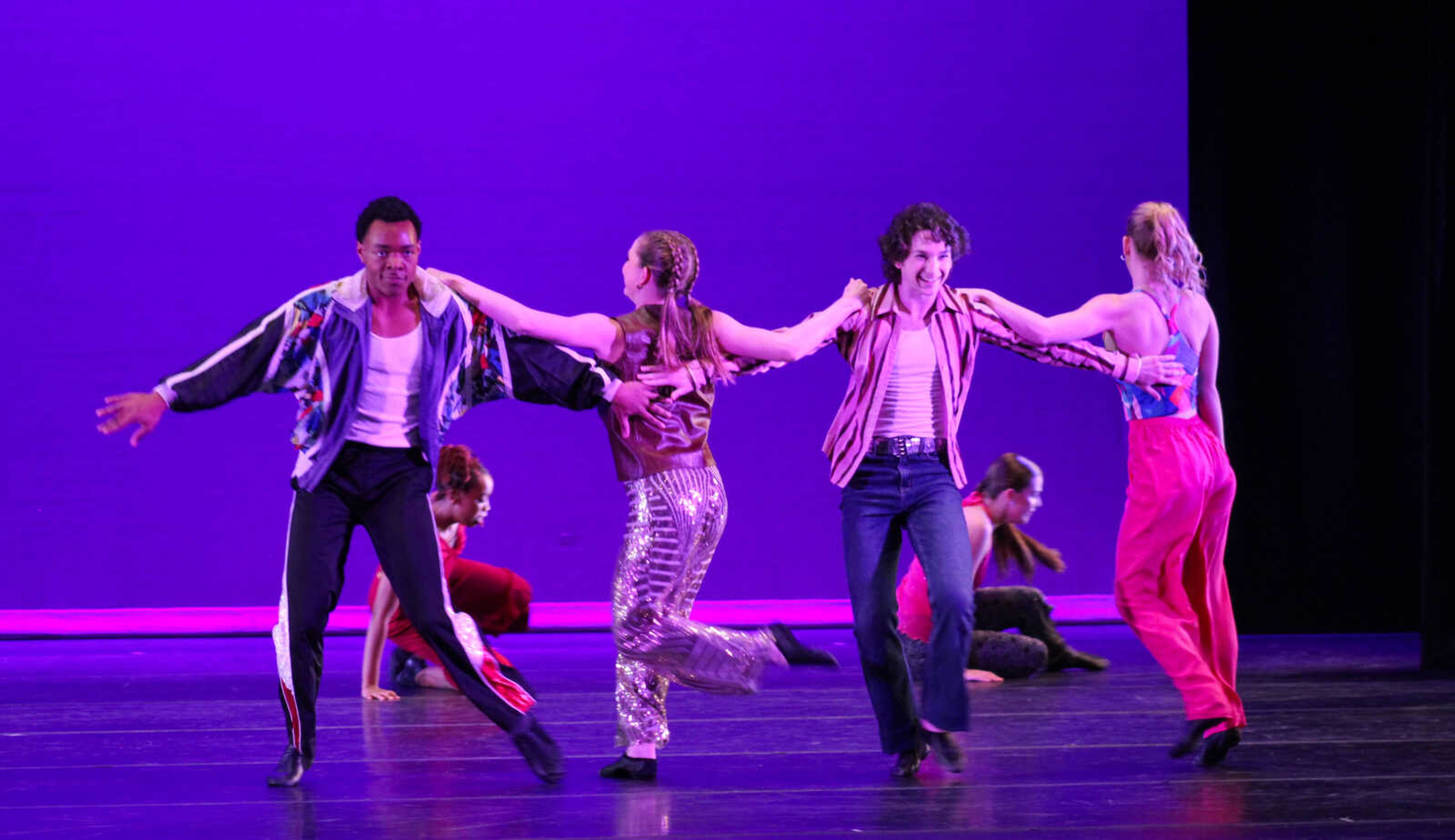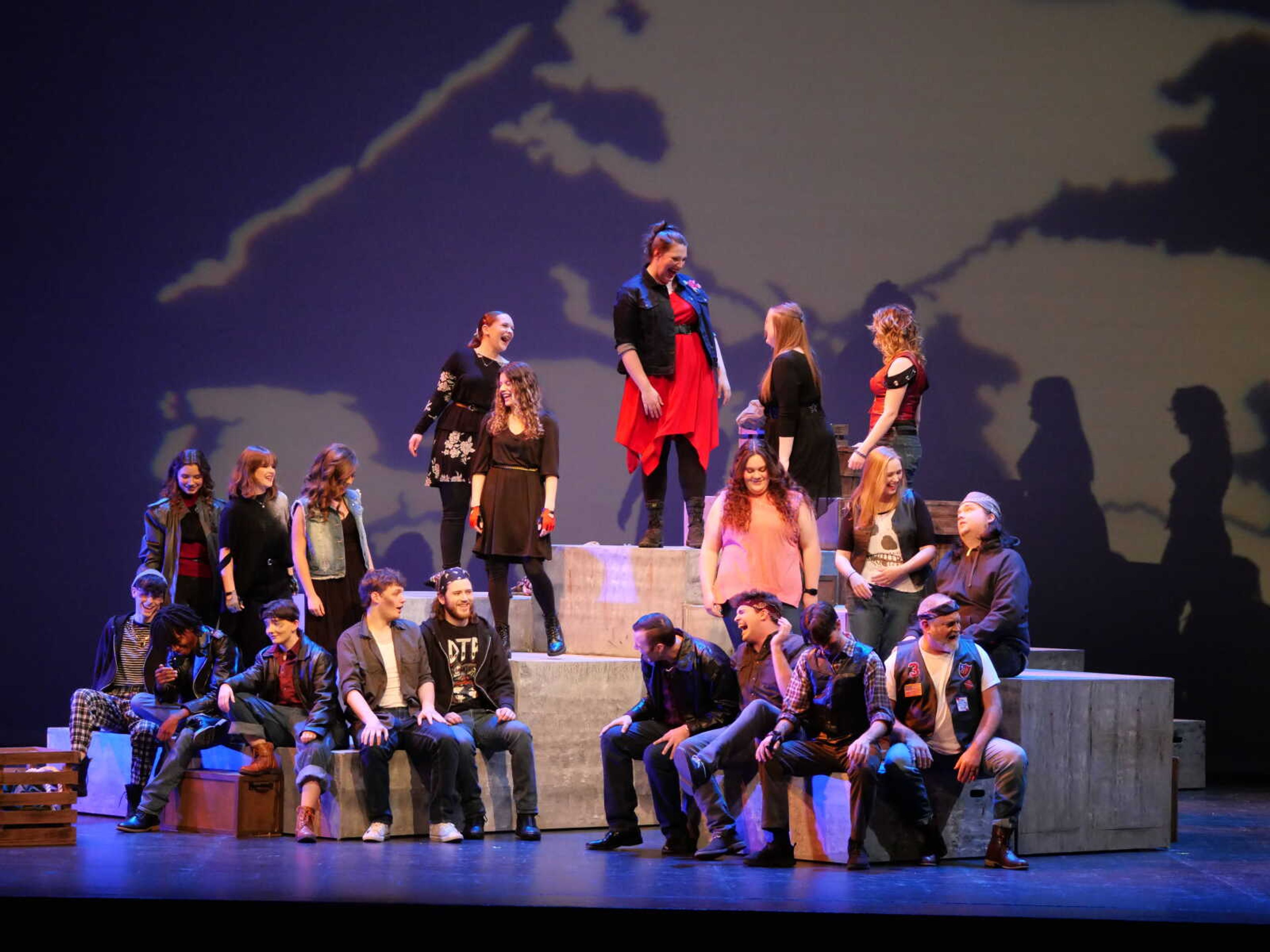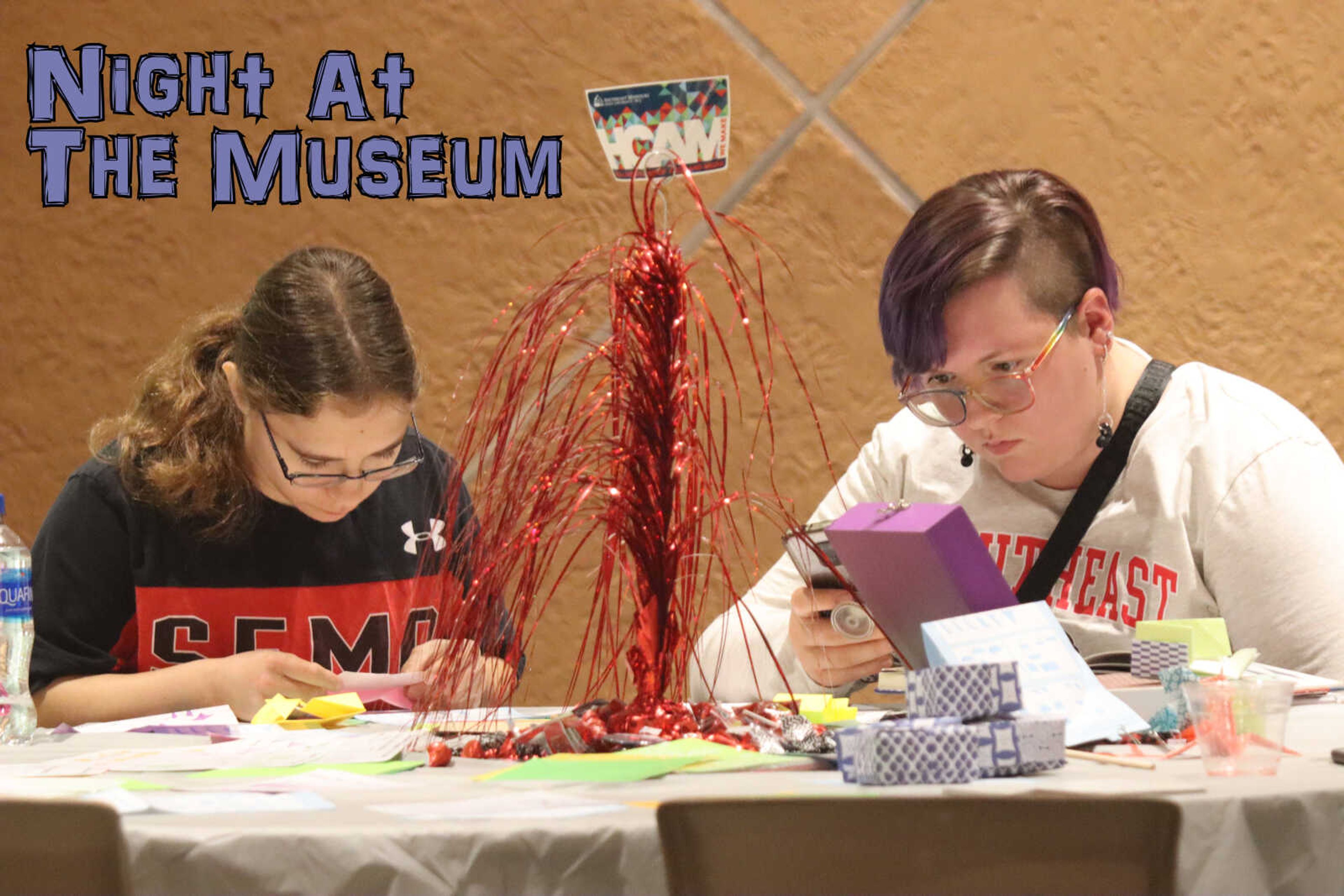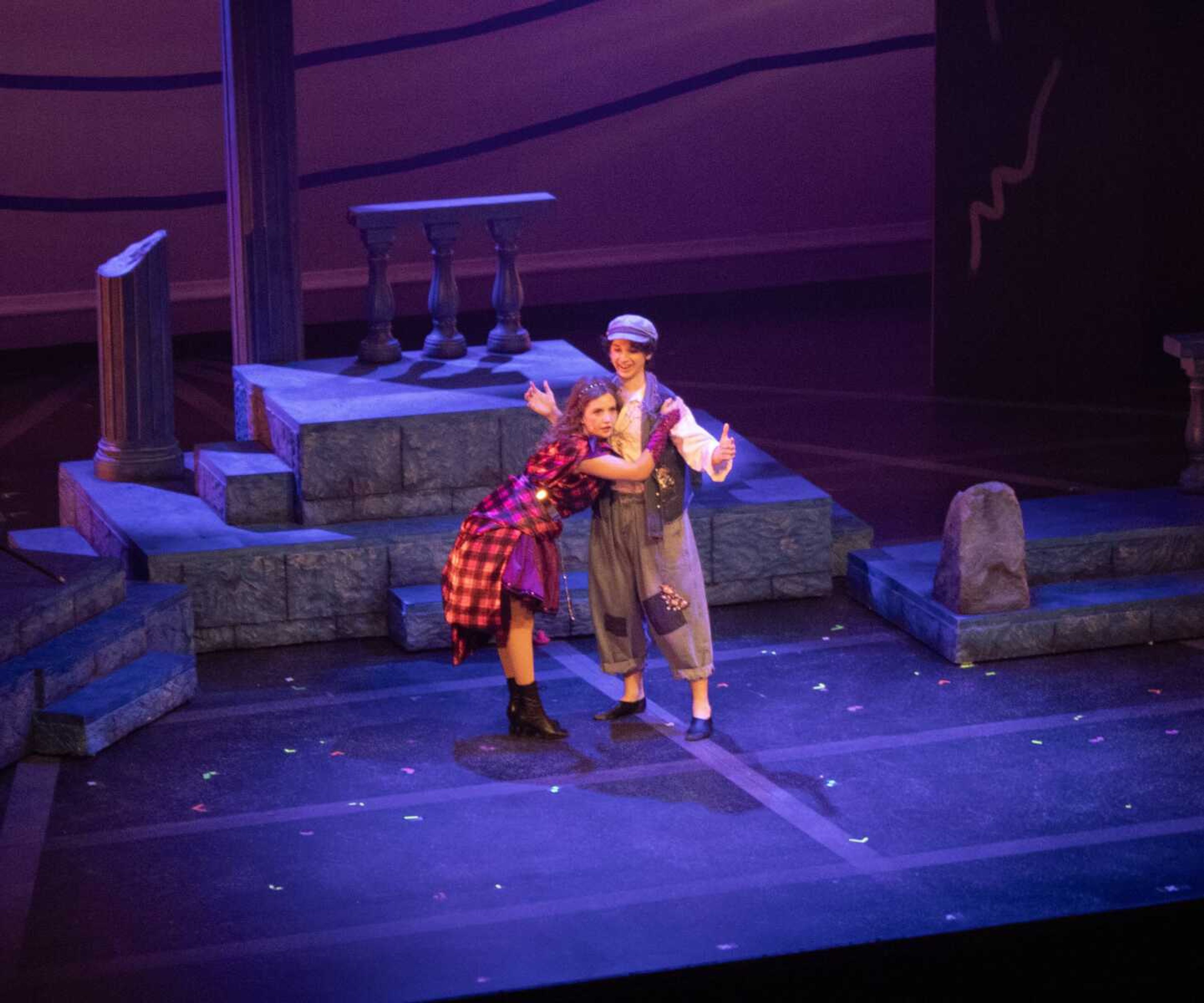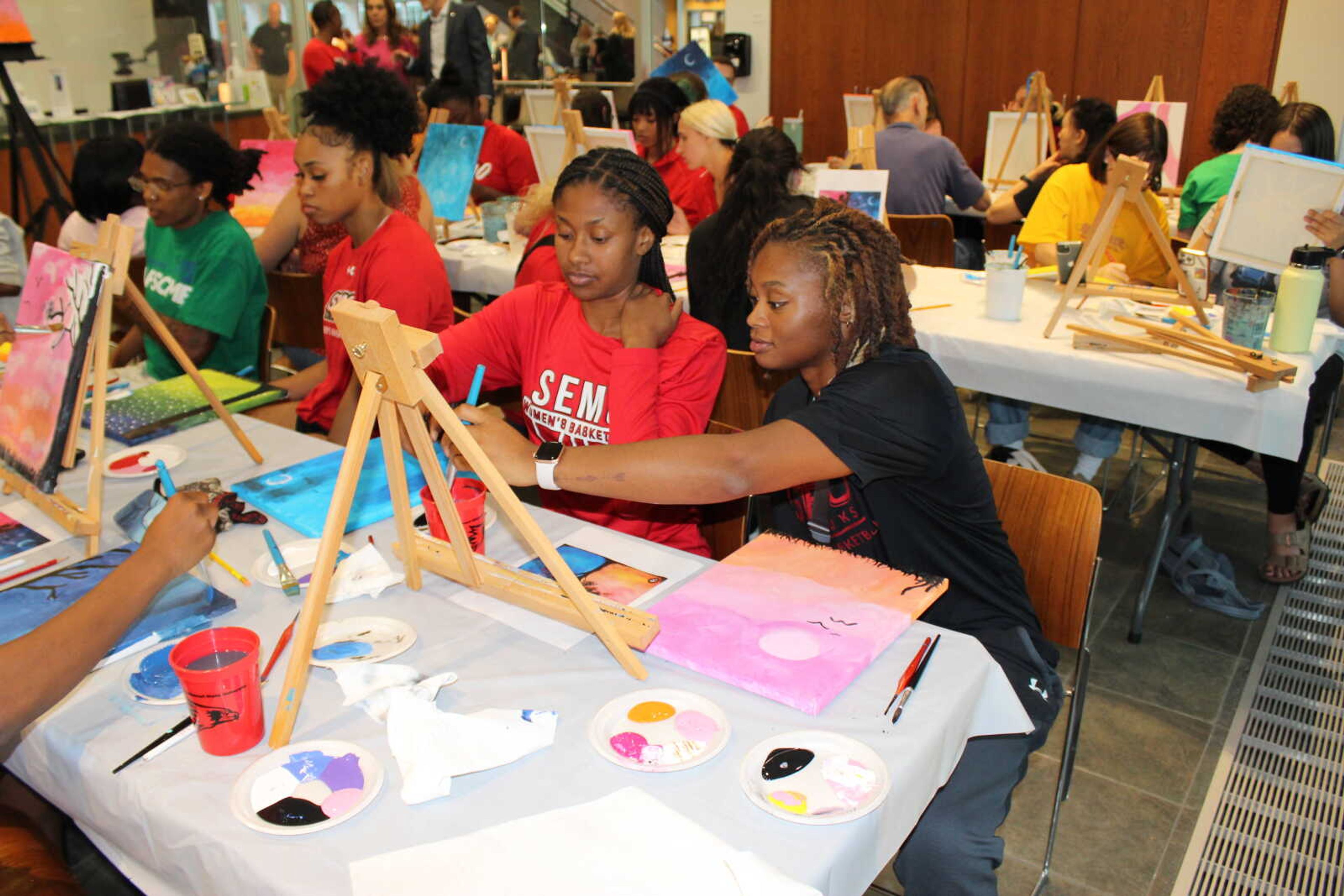Strolling is a cultural tradition for Black sororities and fraternities that is practiced at universities all across the United States, including SEMO.
Strolling is an organized dance, usually performed in a line, which represents power and unification, according to the article “An Incredibly Brief History of Strolling: Being a Multicultural Greek” by Alpha Phi Gamma National Sorority Inc. The article also describes it as a visual representation of the love and community built within historically African American sororities and fraternities.
The rhythmic pattern of movements and chants entices people to watch and is often performed at events, which can lift spirits and unite communities.
Grand Basilei of SEMO’s Omega Psi Phi Fraternity Inc. Tyler Richardson said strolling is a way to build interdependence within his fraternity.
“When you stroll in a line and you have your brothers behind you, there is a connection there. You know someone always has your back, all the way down the line,” Richardson said.
Members of the organization link together as if creating a chain of solidarity, he said. They move in synchronicity, making precise steps and gestures that are unique to each organization.
Strolling was first introduced to Greek life in the early 1900s by Sorority Alpha Kappa Alpha and the National Pan-Hellenic Council (NPHC), as explained in the article by Alpha Phi Gamma National Sorority Inc. The NPHC is also known as the Divine 9, which stands for the nine historically Black fraternities and sororities who are a part of the NPHC.
This form of dance is heavily influenced by South African culture, and it was originally used to show pride and unity in a time of racism and segregation, according to the Alpha Phi Gamma National Sorority Inc. article.
Strolling has become a right of passage for members of Black sororities and fraternities, as many strolls have been passed down throughout the years. Richardson said this has become a sacred tradition that is highly respected by the members.
Senior member of SEMO’s Delta Sigma Theta Sorority Inc. Aneenah Smith described her first time strolling as very joyful. Smith compares strolling as similar to praising in church because it inspires a deep sense of unity.
“Our chapter has been here since 1988, and there have been strolls passed down since then,” alum of SEMO’s Omega Psi Phi and Omega Psi Phi advisor Will Atkins said. “Newer members create strolls and pass those down and also teach them to the older guys. It's a way to bond.”
Every Divine 9 sorority and fraternity has its own stroll, and many of the movements are representative of the history of that specific organization.
“To those a part of the organization, those strolls and those movements, they all mean something,” Richardson said. “Our organization has specific strolls that depict certain things that we live by in our creed. Each stroll is based on our history, and it is unique to us and our fraternity.”
The strolls and their historical meanings are traditionally not often shared outside of the fraternity or sorority. Keeping that information to themselves creates a closer community by building a level of trust between members that understand the symbolism of specific strolls.
Having such individualized forms of the dance creates an immeasurable level of respect for each stroll and the organization associated with it, Atkins said. Each stroll is specific to its organization and is not meant to be used or performed by other organizations, out of respect for the heritage behind it.
“It’s not for anyone who is on the outside. Strolling shows that you have earned the right to do this,” Atkins said. “A lot of it has to do with the history and culture behind certain movements. Strolling is paying homage to that.”
This deeply-ingrained respect and appreciation for the practice of strolling creates a very small, close-knit community, Richardson said. The act of strolling is usually not heavily promoted to the public. This is in an attempt to preserve the importance and intimacy the dance has for the people involved.
“It’s a secret society kind of thing. If you know, you know. But you’ll definitely see it out there. You just have to know what you're looking at,” Vice Grand Basilei of Omega Psi Phi Fraternity Inc. Christian Perez said.
While the people who stroll do it to pay tribute to their brothers and sisters, there are still characteristics of performance and entertainment that make strolling so appealing.
“Exaggerated movements that we specifically call marching can be seen from far away. People want to see what's going on. It’s always a show, a spectacle. We like to entertain,” Atkins said.
Strolling was performed at some of the SEMO homecoming tailgates to encourage team morale.
Although strolling can be intriguing to the outsider’s perspective, it is something that comes with a great deal of respect and tradition. Strolling is built off the foundation of the fraternity or sorority it is associated with, giving strolling a much deeper meaning than just an amusing dance.
Strolling isn’t something anyone can do. You have to be a part of a Divine 9 organization, and you don’t join an organization just to stroll, although it is a fun benefit, Richardson said.
Strolling was created for and catered to a greater cause — the appreciation and unification of African American culture and history.
“For me, strolling is just one more thing that I can relate to the members in my fraternity about. Sometimes, we can’t always relate on certain levels, but we all know a stroll,” Richardson said.
